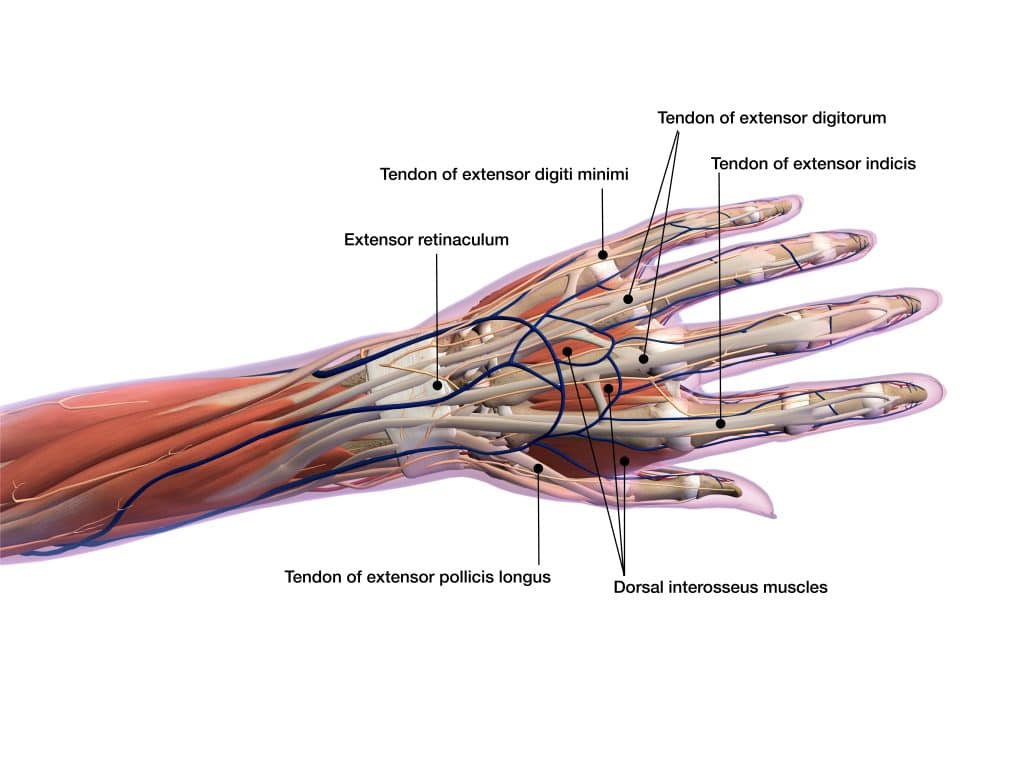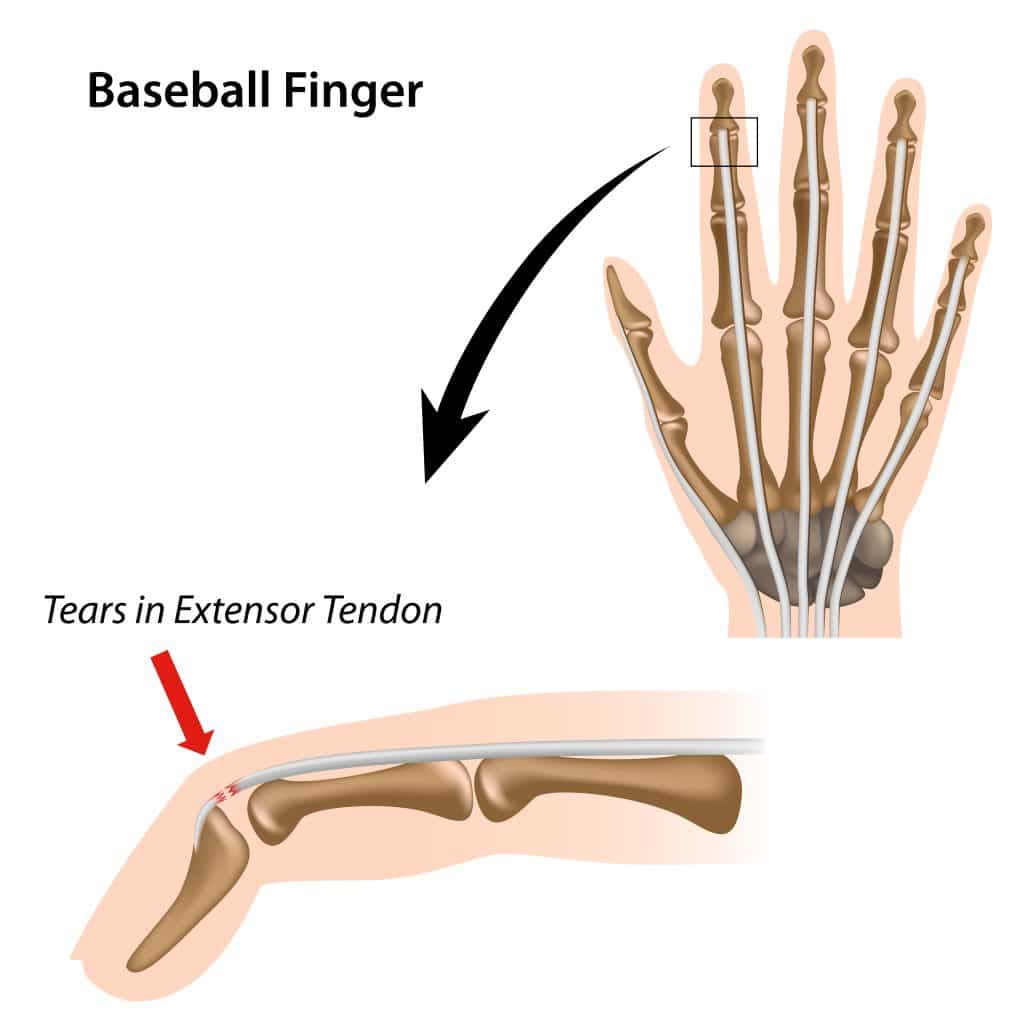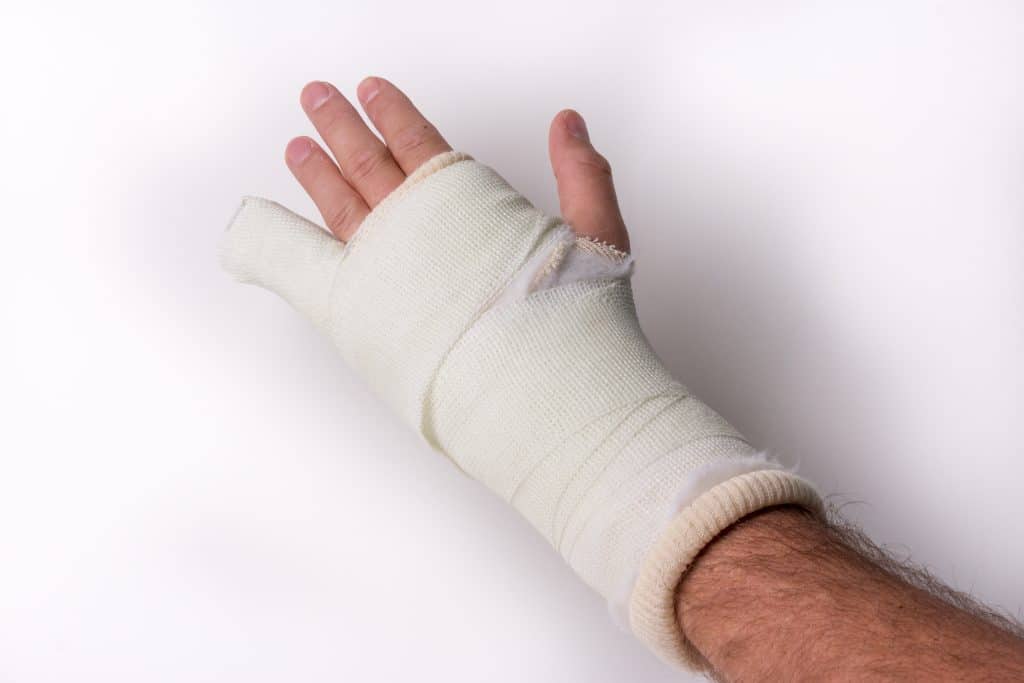Extensor Tendon Tear
Tendons connect muscles to bones to help them move. Extensor tendons straighten joints, while flexor tendons help them bend. When people suffer an extensor tendon tear in their hand, they cannot fully straighten the affected finger(s) or wrist.
Common Extensor Tendon Tear

Tendons are strong, thick bands of fibrous tissue that connect muscles to bones. When muscles contract, the attached tendons pull on the adjoining bone to move it.
Tendons that move the bones of the hand are located in the forearm, extend through the wrist, and attach to the fingers. These extensor tendons are located on the top or backside of the hand, whereas flexor tendons are on the palm side of the hand.
You have extensor tendons in other areas as well. You can injure extensor tendons in your elbow, as in golfer’s elbow or tennis elbow. You can also get tendonitis in your ankle or foot’s extensor tendons. This is usually felt on the top of the foot in the center and typically results from overuse.
Extensor Tendon Injury
Orthopedic doctors commonly divide extensor tendon injuries into open wounds and closed ruptures. Open injuries include avulsions (when part of a bone separates from the rest) and deep cuts. Closed ruptures typically result from overuse or an underlying medical condition, such as rheumatoid arthritis, that weakens tendons and makes their spontaneous rupture more likely.
Because extensor tendons lie relatively close to the skin’s surface, a deep cut to the back of the hand will likely affect an extensor tendon. The tendon often separates into two pieces, and these flexible bands get tugged back toward their connection point. This distance is too great for the tendon to bridge and heal on its own, thus requiring surgery.
Sometimes, however, extensor tendons are only partially torn or cut. You may still be able to extend your finger somewhat in a partial tear, but not all the way. Partial extensor tendon tears may or may not need surgery.
Extensor Tendon Tear Symptoms

The most common symptoms of an extensor tendon tear in the hand include:
- A cut on the top of your hand
- The inability to open your hand, straighten your fingers, or extend your wrist
- Drooping of the end joint of your finger
- The hand or wrist being “stuck” in an odd position
- Swelling, bruising, or tenderness
Diagnosing an Extensor Tendon Tear
Diagnosing this type of injury can be challenging, depending on the location and degree of the tear. Your orthopedic hand and wrist specialist will perform a physical exam and test your hand’s functionality. Sometimes they will take an X-ray to determine if there are any fractures in the area. They may also use an MRI to evaluate the extent of a tear.
Your orthopedic hand and wrist surgeon uses this diagnostic information to determine the best treatment for an extensor tendon tear, including whether you need surgery.
Non-Surgical Treatment for Extensor Tendon Tears
Tendon tears where the tendon is at least 50 percent intact may heal without surgery. Two of the most common injuries in this category are mallet finger, also known as baseball finger, and a boutonnière deformity. Mallet finger affects the tip of the finger, and a boutonnière deformity impacts both the finger’s middle and end joints.
Non-surgical treatment for an extensor tendon tear like mallet finger usually involves wearing a splint and performing regular hand exercises. Recovery through nonsurgical methods may take weeks or months, just as long as surgical recovery.
Surgical Treatment for Extensor Tendon Tears

Many times torn extensor tendons require surgery. Your orthopedic hand and wrist surgeon will stitch the tendon back together and may place a pin in the area to stabilize the repair.
Patients typically wear a non-removable plaster splint or cast post-surgery for at least 1 to 2 weeks. This splint extends the fingers and wrist to avoid putting excess pressure on the tendon while it heals.
After your hand specialist approves changing to a removable plastic splint, you will begin hand therapy exercises, which are integral for regaining the hand’s functionality. Many patients continue physical therapy for their hand and wrist multiple times weekly for several months.
Hand Therapy for an Extensor Tendon Tear
Take care when using your injured hand while it heals. Wear your splint and follow your orthopedic hand surgeon’s exercise recommendations to help ensure the best possible healing outcome. Some people never fully regain complete straightening of the affected finger(s) or find that that finger moves more slowly than the rest.
If your hand is still stiff after healing, you may need additional surgery to remove scar tissue impacting your hand’s function. The goal of all treatments is to restore as much finger and wrist functionality as possible while avoiding the development of issues like wrist tendonitis.
If you have an injury or condition like mallet finger that’s affecting wrist or hand use, please contact us or comment below.
Leave a Reply